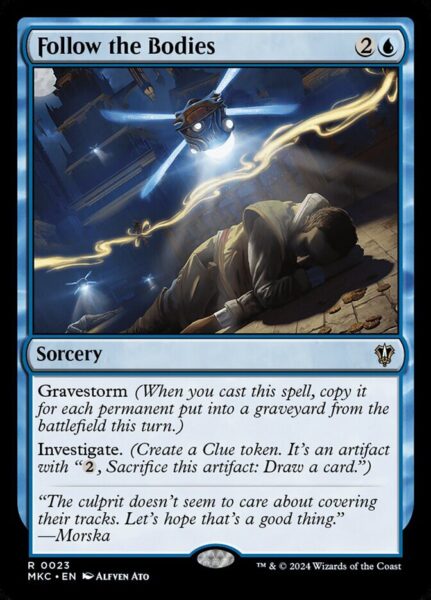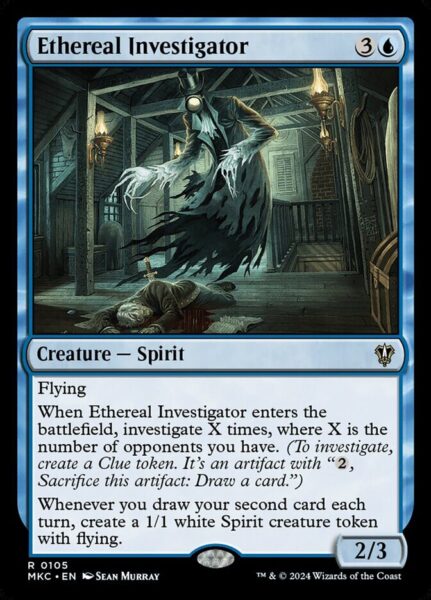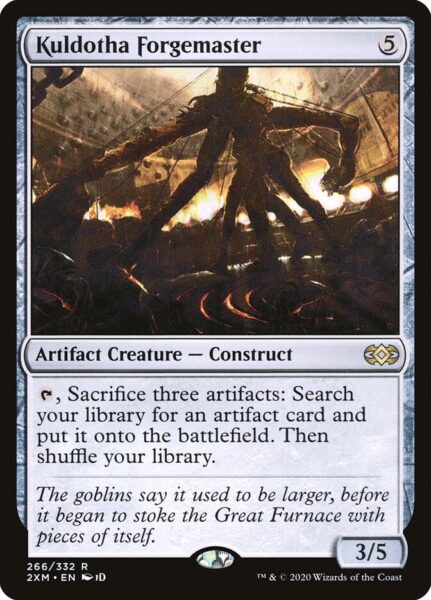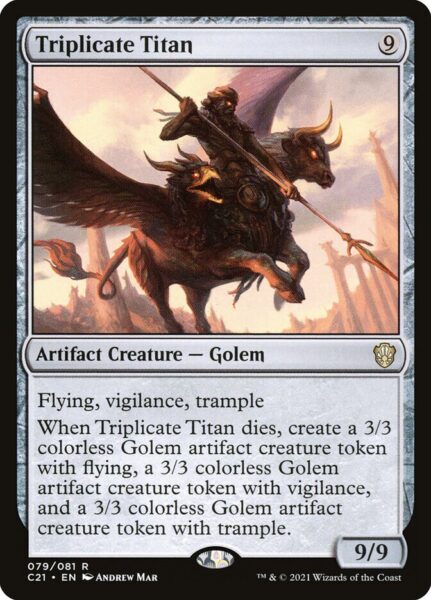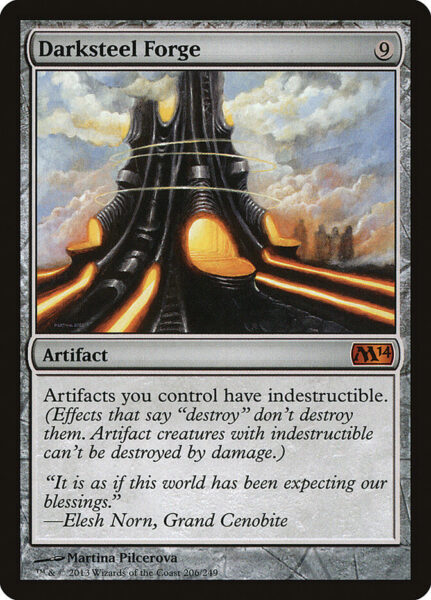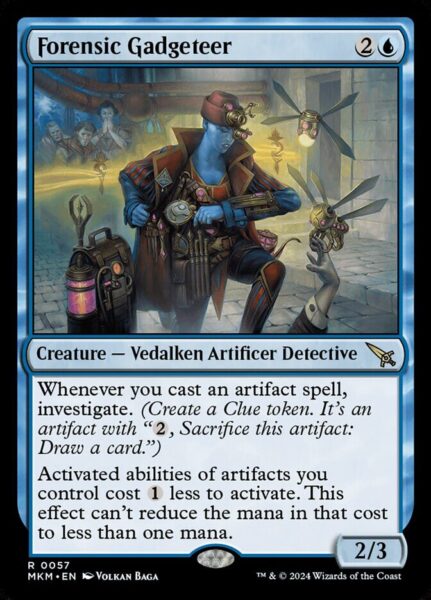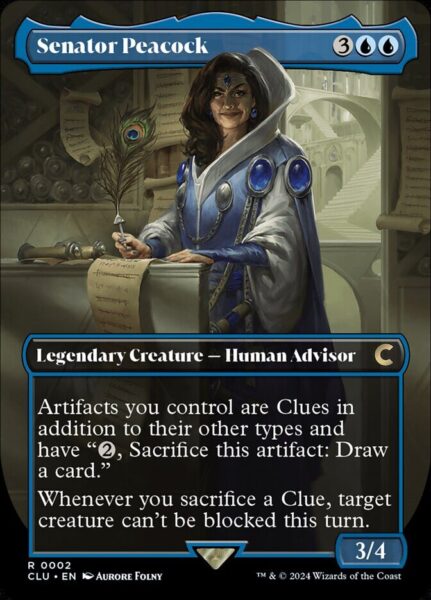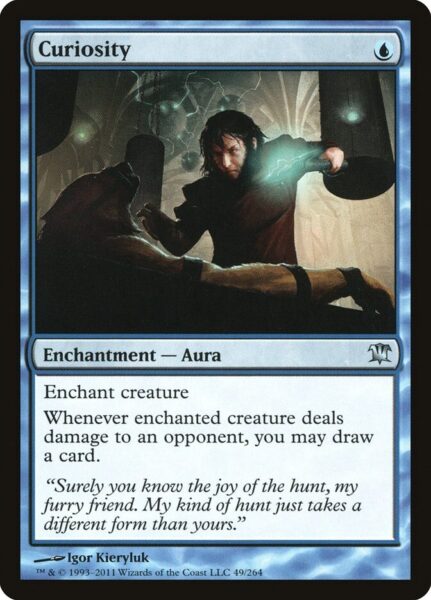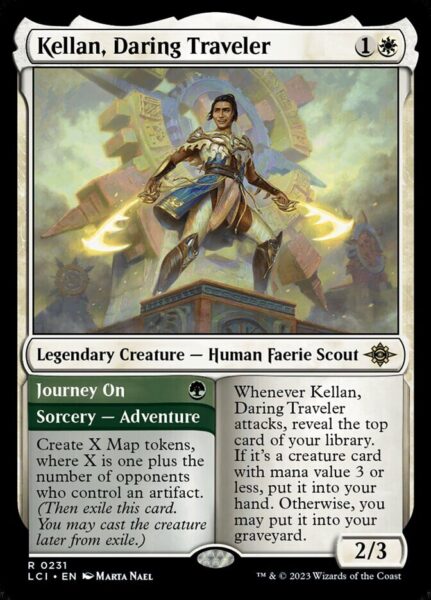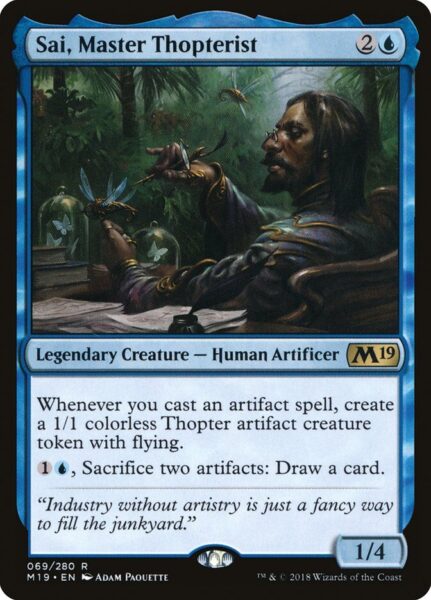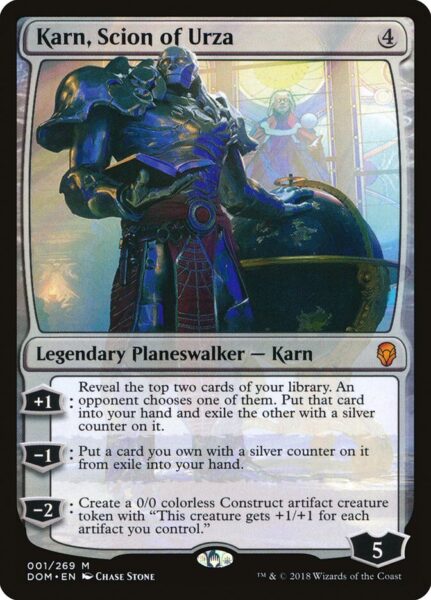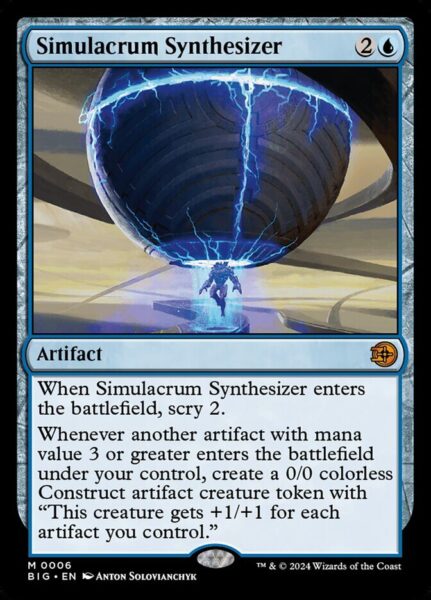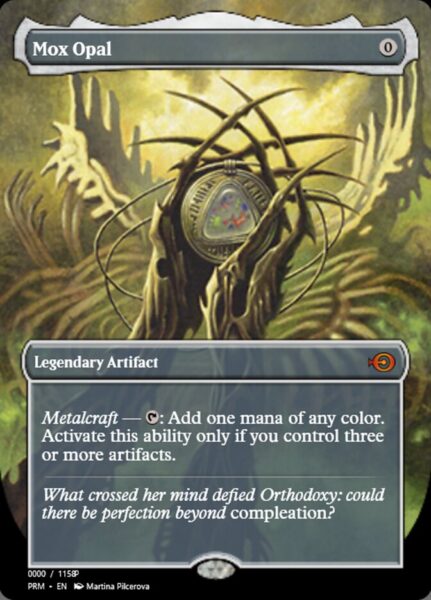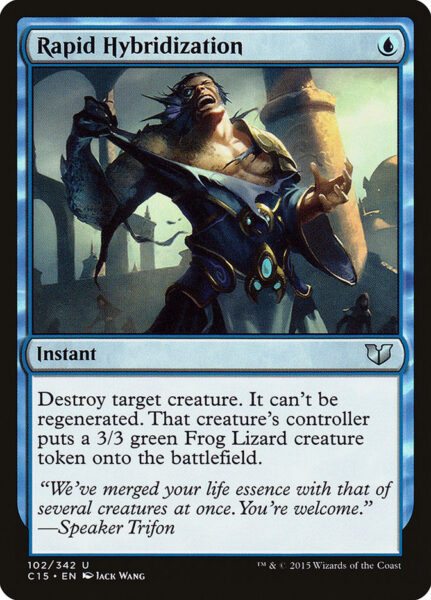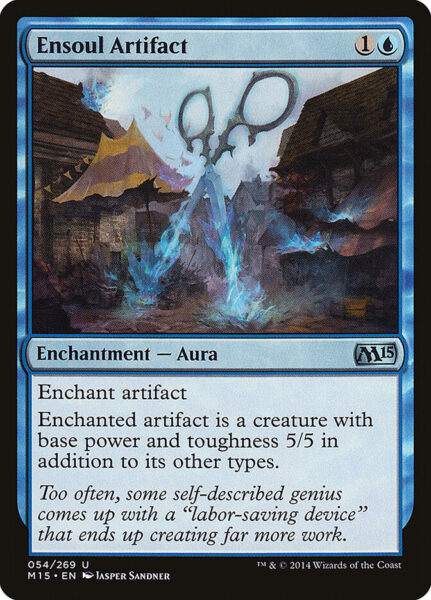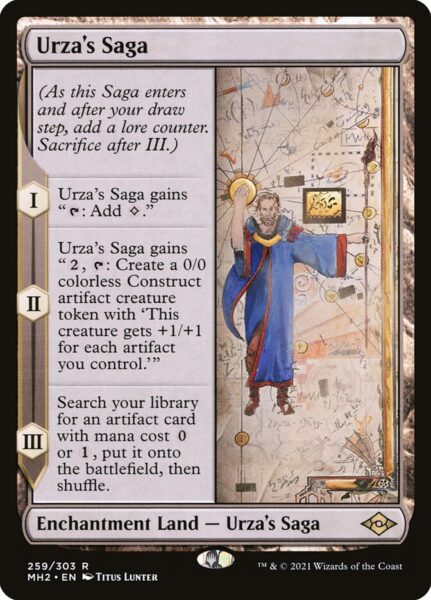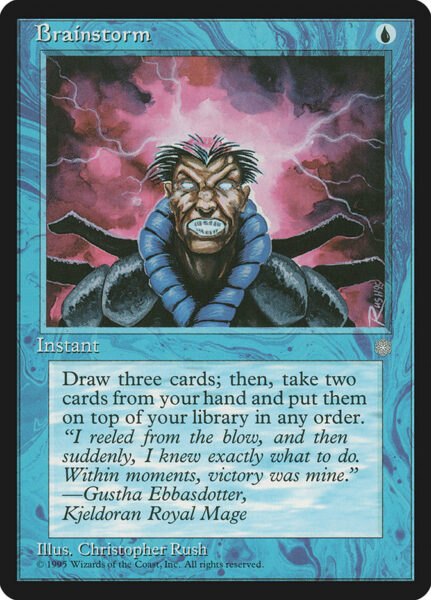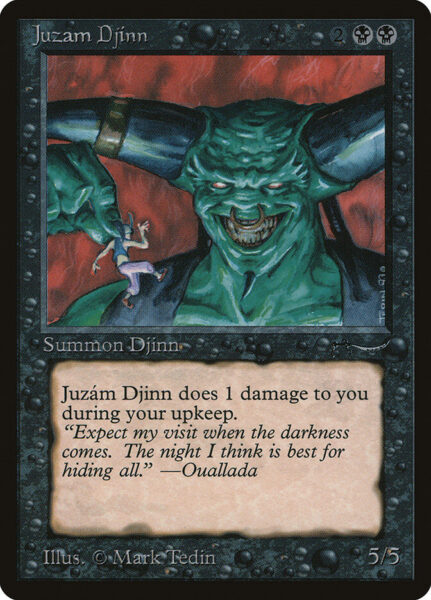by Johnny Cycles, April 25th, 2025
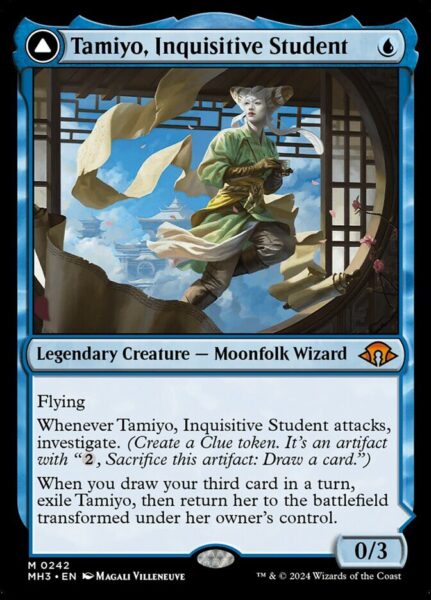
Want to beat down your opponents with the most unimposing army in Magic? Love the movie Clue as much as I do? Hate being the last to play your commander? Then Tamiyo, Inquisitive Student is the perfect legendary creature for you! Coming down on turn 1 will be sure to annoy your opponents until they realize that your primary game plan is to durdle, make Clues, then durdle some more. But once you’ve lulled them into thinking you have no true win condition…boom, you make your Clues into creatures and swing for lethal!
Sound fun?
Decklist – A Clue Army with Tamiyo, Inquisitive Student
| Tamiyo, Inquisitive Student |
Creatures (26)
| Erdwal Illuminator | |
| Lonis, Cryptozoologist | |
| Academy Manufactor | |
| Akal Pakal, First Among Equals | |
| Animating Faerie | |
| Forensic Gadgeteer | |
| Sai, Master Thopterist | |
| Skilled Animator | |
| Tireless Tracker |
| Adrix and Nev, Twincasters | |
| Kellan, Inquisitive Prodigy | |
| Master Transmuter | |
| Subtlety | |
| Urza, Lord High Artificer | |
| Vedalken Humiliator | |
| Whirler Rogue | |
| Kuldotha Forgemaster | |
| Senator Peacock | |
| Wavesifter |
| Kappa Cannoneer | |
| Torrential Gearhulk | |
| Junk Winder | |
| Tangletrove Kelp | |
| Thought Monitor | |
| Triplicate Titan | |
| Darksteel Colossus |
Planeswalkers (1)
| Karn, Scion of Urza |
Artifacts (10)
| Mox Amber | |
| Mox Opal | |
| Idol of Oblivion | |
| Investigator’s Journal | |
| Esoteric Duplicator | |
| Inspiring Statuary | |
| Simulacrum Synthesizer | |
| Trading Post | |
| Tamiyo’s Journal | |
| Darksteel Forge |
Enchantments (5)
| Curious Inquiry | |
| Ensoul Artifact | |
| Zoetic Glyph | |
| Mechanized Production | |
| Thopter Spy Network |
Instants (16) with 1 mfdc
| Pongify | |
| Rapid Hybridization | |
| Three Steps Ahead | |
| Counterspell | |
| Cyclonic Rift | |
| Deduce | |
| Essence Scatter | |
| Jwari Disruption (mfdc) | |
| Lat-Nam’s Legacy | |
| Flare of Denial | |
| Metallic Rebuke | |
| Whir of Invention |
| Rampage of the Clans | |
| Confirm Suspicions | |
| Force of Will | |
| Spell Swindle |
Sorceries (3)
| Chart a Course | |
| Rise and Shine | |
| Thoughtcast |
Lands (39) with 1 mfdc
Abstergo Entertainment
Academy Ruins
Archway of Innovation
Breeding Pool
Castle Vantress
Command Tower
Dreamroot Cascade
Flooded Grove
Flooded Strand
Hall of Storm Giants
Hedge Maze
Inventors’ Fair
Jwari Ruins
Maze of Ith
Memorial to Genius
Misty Rainforest
Mystic Sanctuary
Reliquary Tower
Riptide Laboratory
Rivendell
Shifting Woodland
The Shire
Tidechannel Pathway
Verdant Catacombs
Volatile Fault
Windswept Heath
Yavimaya Coast
Island (8)
Forest (5)
Deck Tech
Primary Game Plan
Our first goal is to make as many Clues as possible, turn them all into big creatures, and attack for lethal. With this in mind, we play 13 ways to make Clues, not including our commander, plus three artifacts that are also Clues. Many of these methods of making Clues are repeatable, like Tamiyo, Inquisitive Student, Tireless Tracker, and Forensic Gadgeteer.
For the second part of our primary game plan, we have seven ways to make our Clues (and other artifacts) into creatures. These range from transforming an artifact into a creature indefinitely (Ensoul Artifact) to making them all creatures for a single turn (Rise and Shine).
Our secondary plan also involves artifacts and also involves attacking. We make Constructs that gain their power and toughness from the number of artifacts we control. A couple of these in conjunction with our various means of making creatures unblockable can close out a game very quickly.
Furthermore, like the more streamlined, Mono Blue artifact decks in the format (a blend of Affinity and Control), our deck does have a top end of powerful artifact creatures and ways to cheat them into play. I’ll speak more about why this is in a moment.
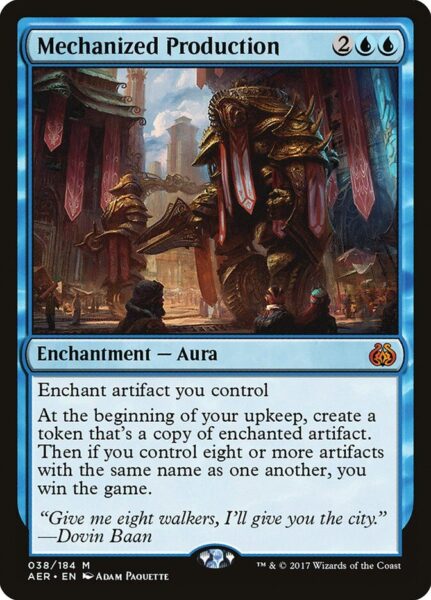
Finally, our last plan of attack and one I am still dreaming of executing is to outright win the game with Mechanized Production.

Bending the Color Pie
I originally conceived of this deck as the second in my series, Breaking the Color Pie (the first being Mono White Card Draw). Unfortunately, animating artifacts happens to be considered a primary mechanic for Blue, according to Mark Rosewater. It’s worth mentioning, however, that when Rosewater wrote his first article about the mechanical color pie in 2017, animating artifacts wasn’t even listed for Blue as a mechanic.
I’m not sure what the first Blue spell that animated an artifact is, but Ensoul Artifact was first printed in M15. It stands to reason, then, that Blue hadn’t yet gained enough cards like this for the mechanic to even be considered tertiary in 2017.

By 2021, when Rosewater updated his mechanical color pie, Modern Horizons 2 was already out and Rise and Shine, along with a number of other Blue artifact animation, existed. Thus, Blue gained another primary mechanic in the course of 4 years.
This is interesting in and of itself, but it also explains why I conceived of this deck as breaking the color pie. I started playing Magic in the 90s and then again more seriously in 2011. For the majority of my time playing the game, then, animating artifacts was not a Blue mechanic.
It’s also worth mentioning that making tokens is considered a secondary mechanic for Blue.
Remember this deck from Standard 2018?
Finally, Blue is not typically considered a creature-heavy color, or a color that supports aggressive strategies (Merfolk in Modern and the occasional Mono Blue Tempo deck in Standard are some exceptions to this). When thinking of building a Blue deck that breaks the color pie, then, I imagined flooding the board with tokens and beating face in just such a go-wide, aggressive strategy.
Combine these three things – creating and animating tokens to attack with – and this is how I conceived of this deck breaking the color pie. I wanted to build a Blue deck that used token generation and a go-wide strategy to win games.
How I Got Here
Blue can create Thopters well enough, but that didn’t intrigue me as much as making various noncreature tokens and turning them into an army. So I started by finding all the cards I could that created Clues or were Clues, many of which could be found in the Commander Precon deck, Deep Clue Sea. I wanted as much Clue production as possible as I envisioned an army of animated tokens overrunning my opponents.
I won’t lie, though. This version of the deck was underpowered and underwhelming (looking at you, Candlestick). Games would more often than not involve me making a lot of Clues with Tamiyo, committing a few enablers to the board, and dying with cards I either couldn’t cast or that wouldn’t impact the game in any meaningful way.
That’s when I realized one important thing about this deck: we don’t need a ton of ways to make Clues because we have Tamiyo, Inquisitive Student to do it for us starting on turn 2. We really only need one or two more ways to generate Clues in the mid- to late-game and we would have plenty to animate and kill opponents with.
But the durdling and dying was still real, even after I trimmed some of the less powerful Clue generators. If my opponent had an aggressive start or simply played bombs, I would get overrun before I could become the aggressor. I needed an alternative plan of attack and I needed more ways to interact with my opponent and slow them down.
For our alternative plan of attack, I did my best to choose cards that would synergize with our go-wide strategy. Kuldotha Forgemaster is a great alternative way to take advantage of all of our Clues, but I didn’t have a lot of silver bullet artifacts that could truly turn the tide in our favor on a stalled board. I chose two creatures – Triplicate Titan and Darksteel Colossus – and a powerful support piece – Darksteel Forge – to give us options in the late game beyond Kappa Cannoneer, Junk Winder, and Tangletrove Kelp, all of which are great in conjunction with other cards, but can’t threaten our opponent on their own the way something like Triplicate Titan can.
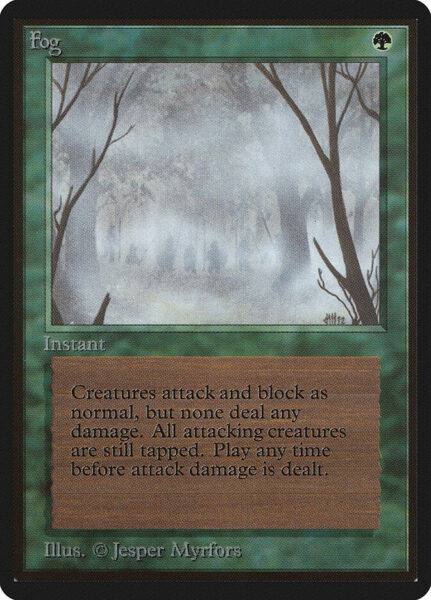
But I still wanted more ways of interacting with my opponent in order not to die. Being in Green gives us access to one of Magic’s most annoying effects – preventing combat damage. Need more time to durdle? Fog and its brethren are great at buying time. And with the flipside of Tamiyo, we would have a way of consistently casting a Fog effect once we found it.
This strategy appealed to me at first mostly because I don’t have a deck that uses preventing combat damage as a way of navigating the game to victory. Furthermore, I have a lot of X/U decks that play traditional Control cards like Counterspell, Cyclonic Rift, and Force of Will.
Nevertheless, when it came down to it, the deck was so much fun to play that I wanted it to be more competitive. Fog effects are great at protecting our life total from combat damage, but they don’t stop our opponents from blowing up our board or burning us out in any number of ways. Counter magic gives us the most flexibility and resilience.
So what began as kind of a meme deck that really focused on enjoying the journey became something with a bit more teeth. Don’t get me wrong, though. I love Commander precisely for the journey, but when a deck never gets off the ground due to its low power level, lack of truly impactful cards, or weak synergies, then it needs a tune-up just to play the game.
Now, let’s talk about the deck!
Making Clues
With our primary game plan relying on Clues, we need a critical mass of ways of producing them. Key to this are permanents like our commander that can repeatedly make Clues with no further mana investment. I have also prioritized ways of doubling our token production.
Academy Manufactor – a staple of any deck looking to make a bunch of artifacts, this Modern Horizons 2 rare ensures we get a Clue from any of the various ways we have of making Food and Treasure tokens. And while we aren’t all that invested in this line, we are very much interested in getting a Food and Treasure out of each Clue we make. They grow our Constructs, protect our life total, and tap for mana. What’s not to like? Academy Manufactor will typically be the first or second artifact we get with Kuldotha Forgemaster (the other being Darksteel Forge).
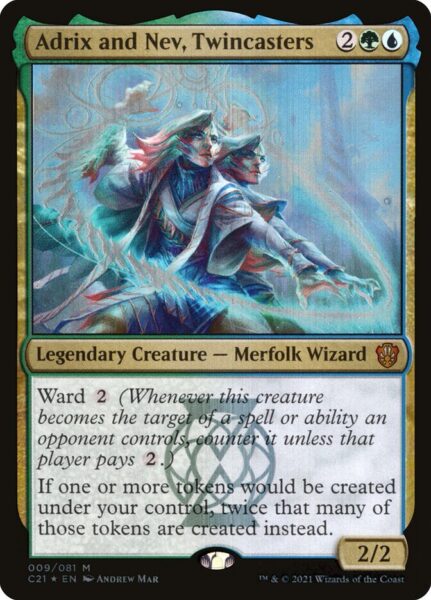
Adrix and Nev, Twincasters – soooo, Doubling Season is no doubt the better option, but it’s also still around $30, and I play it in a bunch of other decks. And since I haven’t referenced my Commander philosophy yet, I’ll remind all my readers that I don’t want to play so-called staples in every deck that can run them. Click the link to see why. This (these?) Merfolk Wizard(s) are Simic colors and do what we want, so they get the nod over the 5-mana, $30 enchantment currently Standard legal. Note that this card doesn’t make Clues itself, but does double up the number we get whenever we do make them.
Confirm Suspicions – our first 1-time use Clue generator…never mind. Tamiyo, Seasoned Scholar means we can use this counter spell that makes us three Clues more than once.
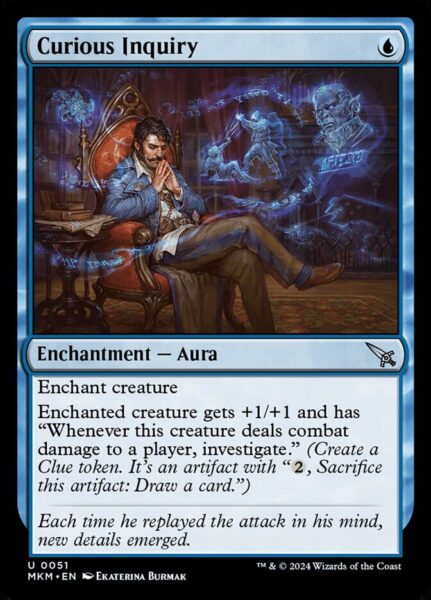
Curious Inquiry – the dream is to enchant Tamiyo with this on turn 2 and get two Clues out of our attack. The 21-turn Commander damage clock is not nothing, right? Right??? As an aside, I really like the flavor of this card alongside it’s predecessors.
Simple curiosity leads to answers (card draw), while obsessive curiosity comes at a cost (losing the enchantment if you don’t attack), while the more restrained and polite request only gives you clues to the answer you’re looking for (conditional card draw). Moving on…
Deduce – a 2-mana instant speed cantrip that nets us a Clue, as well. I love seeing this card in my opening seven.
Erdwal Illuminator – another enabler that synergizes very well with Tamiyo, particularly if we have it on turn 2. In the late game, it’s mana investment is low enough that it won’t stop us from doing something else or holding up mana for counters, while we’re almost always interested in increasing Clue production.
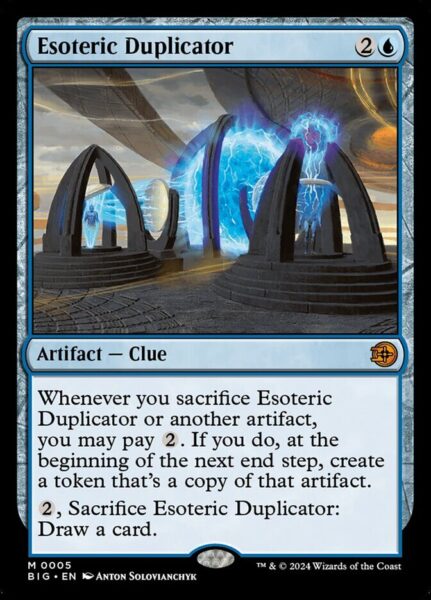
Esoteric Duplicator – our first non-token Clue, this mythic is from The Big Score, which can be found in Outlaws of Thunder Junction. It only has a single, limited printing and currently costs under $5. I say this because it’s a unique effect, albeit one with a not insignificant mana investment. Still, I’m sure there are ways to abuse its duplicating of artifacts sacrificed that we are not overly interested in. Pick up your copies now is my advice.
As to it’s role in our deck, we do play Kuldotha Forgemaster and Triplicate Titan. See where I’m going with this? For the low cost of , we can sacrifice the 9/9 Golem and two Clues to put any artifact in our deck on the battlefield AND have three more artifacts plus a token copy of the 9/9 to set us up to do it all again and again and again. It’s a combo!
Forensic Gadgeteer – one of our best Clue generators, it also lets us crack Clues for .
Investigator’s Journal – largely here because it’s a Clue itself, it’s also a nice way to grind out the midgame, as long as we’re not dying. As I write this, however, I’m looking at a copy of The One Ring and wondering just how badly I want to stay on theme…
Kellan, Inquisitive Prodigy – I like everything about this card. Tail the Suspect synergizes with our deck in a way Growth Spiral does not, while the creature half gives us hate against problem artifacts or card draw. On a side note, I’m a little confused about Kellan’s color identity.
I’m sure there are others, but I can’t think of any creatures that have appeared in four of the five colors. What is going on with this Faerie???
Lonis, Cryptozoologist – another Clue producer for us, this Snake Elf Scout also gives us something else to do with our Clues if we’ve amassed a huge number of them but have not found an animation effect.

Senator Peacock – Clue is my favorite movie and Mrs. Peacock is one of its funniest characters, though I think she’s probably overshadowed by some of the others on first viewing. Her facial expressions alone are amazing. As is this card for our deck. What better way to make an army of Clues than to turn all of our artifacts into them? The last line of text gives us a way to swing in for lethal through a board full of blockers.
Tamiyo’s Journal – aside from the obvious thematic synergies, this legendary artifact gives us a repeatable tutor effect that we should be able to abuse again and again.

Tangletrove Kelp – another permanent that is a Clue, this Clue Plant is our best finisher.
Three Steps Ahead – to copy a Clue is a lot, but the flexibility this card gives us alongside its copying ability is why we’re playing it.
Tireless Tracker – I’m not 100% certain, but I think this is the first card (or first set) in which the investigate mechanic appeared. It’s one reason to play as many fetch lands as you can in this deck.
Wavesifter – we’re mostly interested in casting this for its evoke cost, but in the late game it can come down and chump block nicely.

Turning Clues into Threats
Now that we’ve covered how we’re making our Clues, let’s look at the various ways we have of turning those unimposing artifacts into lethal threats! There are two ways we can do this. First, the slow, single Ensoul Artifact kind of way, and second, the “hey, look, you’re dead”-overloaded Rise and Shine kind of way.
Animating Faerie – the adventure side of this card is why it’s in the deck. This one is probably among the first cut, to be honest, as a single 4/4 Clue artifact creature is not overly impressive, particularly as it costs 3 mana.
Skilled Animator – for 3 mana, we get a 1/3 and a Clue turned into a 5/5. I view these cards as on theme and good in the early game. They can chip in some damage while we set up, or hold down the fort against some pesky attackers.
Ensoul Artifact – the OG of this effect, I played an Izzet deck in Standard that ran four copies of this alongside Darksteel Citadel, Pia and Kiran Nalaar, Whirler Rogue, and Shrapnel Blast. It was amazing. It’s not so good in our deck.
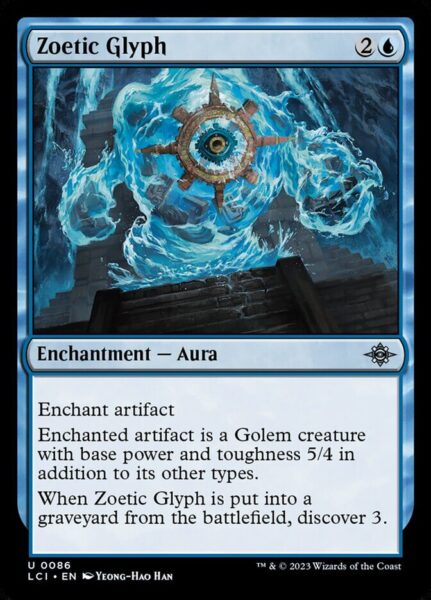
Zoetic Glyph – ooh, now we get to turn a Clue into a 5/4! Discover 3 is nice.

Rampage of the Clans – this is my super secret tech for the deck and I love it. Our opponent looks at our pathetic board of Clues and thinks they’re free to swing in with no repercussions. Surprise! Either we make a bunch of blockers, or, and this is much more fun, we wait until their end step and make a lethal army. Notice, however, that the effect is universal, which has its plusses and minuses.
Rise and Shine – our second best finisher when we overload it.

Tangletrove Kelp – so good that I’m including the picture twice! What a card for us! Sure, we don’t get to choose if our Clues become 6/6s, which can lead to some blowouts from boardwipes, but, hey, that’s why we play counter magic. Otherwise, it’s all upside, as we get to attack or block or both.
Creating a Construct (and Thopter) Army
Blue has no shortage of ways to make other artifact creatures and these make up our secondary game plan. When the Clue plan of attack isn’t coming together, then our backup plan is to make a bunch of very large Constructs with the support of Thopters (and Clues, of course). This gameplan looks like this:
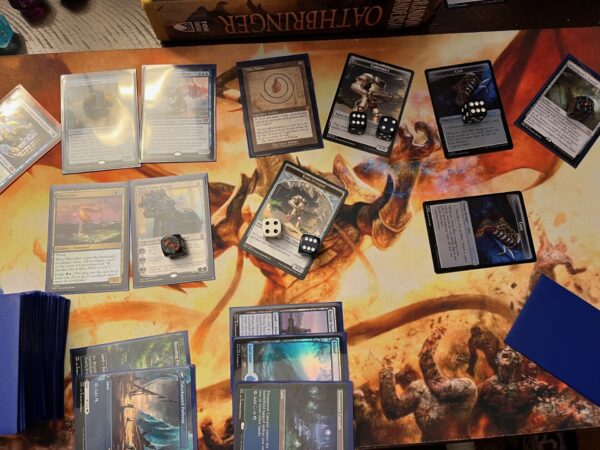
Karn, Scion of Urza – one of my favorite Planeswalkers, probably because I have fond memories of playing him in Standard, he synergizes very well with this avenue of attack. We can -2 him twice to make two Constructs before needing to use his plus.
Sai, Master Thopterist – another source of card advantage using our Clues, this Human Artificer is very good at flooding the board with 1/1 fliers thanks to the number of artifacts we play (18).
Simulacrum Synthesizer – this is arguably our best way of making Constructs. We have 14 artifacts that will trigger it.

Thopter Spy Network – we should have no problem getting a Thopter from this enchantment every turn. The card draw is just as relevant for us as is the Thopter production.
Urza, Lord High Artificer – do I feel a little bad playing this powerhouse in a Tamiyo deck? Not really. For a detailed discussion why Urza is such a powerful card, read about my Mono Blue deck.
Whirler Rogue – getting two Thopters and the ability to make a creature unblockable using our Clue tokens is why this card is in the deck. Don’t sleep on it or cut it in favor of something flashier, say, like, The One Ring. Sticking this on an otherwise stalled board can be game over for our opponent.
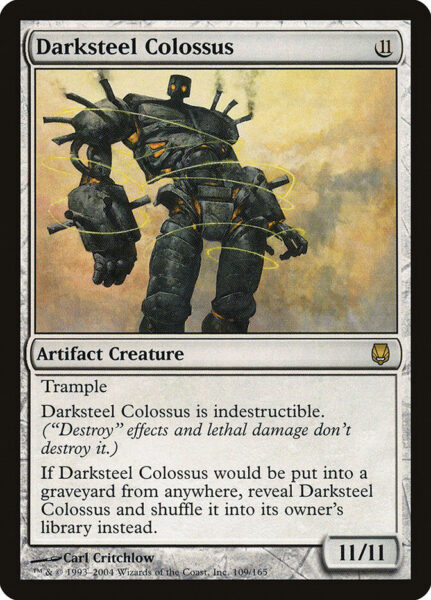
Our Bombs
Complimenting our Construct line of attack is to stick one of our bombs and beat face. I’m going to take some liberties with what constitutes a bomb for this section, since we’re playing such a durdily deck (looking at you, Torrential Gearhulk). Nevertheless, we do have a few big finishers, most of which I’ve mentioned above.
Darksteel Colossus – in today’s high-powered Commander, I’m not sure an 11/11 indestructible with trample is even that playable. Is Phyrexian Triniform strictly better? What about Wurmcoil Engine? There’s always Blightsteel Colossus, too, but wow, people hate that card…

Idol of Oblivion – you know you’re durdling when you include this card in your list of bombs. Yes, we’re mostly interested in this artifact’s synergies with our commander, but in a pinch, we can make a 10/10. And we can even recur Idol of Oblivion from the graveyard with Academy Ruins and do it all again. Now that’s some serious power!
Junk Winder – I’ve yet to play this, which means I can only imagine the sweet, sweet pain we can put our opponent in with the right boardstate. But even with just Tamiyo on turn 1, we can cast Junk Winder on turn 4 and start locking down some permanents.
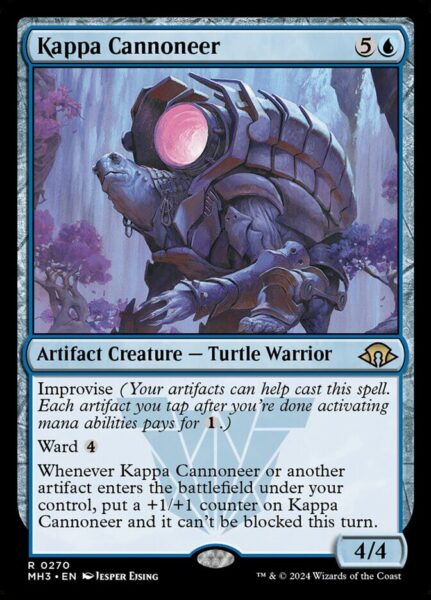
Kappa Cannoneer – I have such mixed feelings about this card. It’s jank level feels pretty high, while the art and flavor are great. But ward ? For a rare? For an archetype that doesn’t really need the help? Why can’t my Dragons get some ward action? Rant about Modern aside, this card is super powerful. Early, it can really put the pressure on our opponent, as we’ll trigger all that text with Tamiyo’s Clue production. Late, we can finish off a weakened opponent with just a single, timely attack.
Kuldotha Forgemaster – this Construct counts as a bomb insomuch as it can go find all of our other bombs.
Master Transmuter – another enabler of bombs, if our opponent can’t answer it, we’ll have a lot of fun, even if we aren’t cheating in a Triplicate Titan on turn 5.
Torrential Gearhulk – our gameplan will often be reliant on a timely answer. Torrential Gearhulk ensures we can counter something in the late game if we’ve burned through our only counter in the early game.
Triplicate Titan – I discuss the combo potential above, but those three keywords are worth highlighting here. That’s a lot of value and makes this one of our best finishers.

Vedalken Humiliator – wow, what a card! And what a name for its effect! In the right spot, sticking this Vedalken Wizard and swinging out will either wipe our opponent’s board or kill them dead.

Alternate Win Condition
I’m not sure I even need to say anything more, but… There will be times when we have way more than eight Clues and just need to untap with this enchanting one of them to win the game. Other times, we can cast this early to increase our Clue production and function as a red herring (do you get the Clue reference?). While our opponent digs for a way to destroy this enchantment, we’re navigating the boardstate to a place where we can resolve Rise and Shine and win via combat.

Synergistic Spells
One of the most fun aspects of this deck is the sheer number of synergies that exist between the cards. I’ve highlighted several and I’m not able to touch on each and every one, but I do want to take the time to point out a few of the more powerful and fun cards that abuse our various gameplans detailed above.
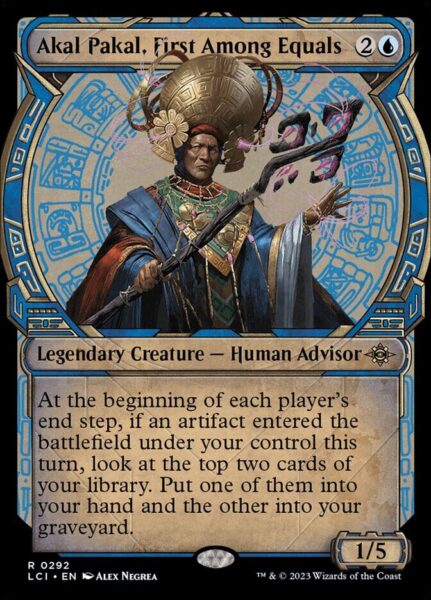
Akal Pakal, First Among Equals – don’t cut this card. Wow, it is so busted in our deck. We should always be able to trigger it on our turn, while we will often be able to on our opponent’s turn, as well. The card selection this Human Advisor gives us is so powerful. Meanwhile, his name sounds like something from a cartoon.
Inspiring Statuary – we play enough nonartifacts that this card can really pull us ahead. Each of our Clues suddenly taps for . Yes, please!
Trading Post – a powerful and flexible card that still feels like a guilty pleasure when I’m not playing The One Ring. The main reason I’m playing this card is for the lifegain. There will be games where we use our life as a resource to get us to stabilization only to be within range of a lethal burn spell or a single evasive attacker. This card helps insulate us from that scenario. Would Shadowspear be better at the same thing? Possibly, but the second reason I’m including this card is for the card advantage it gives us. Finally, who doesn’t like goats?
Whir of Invention – no surprise that this is one of our best cards. With all the Clues and other tokens we can make, there will be games when we go get a Triplicate Titan on our opponent’s end step.
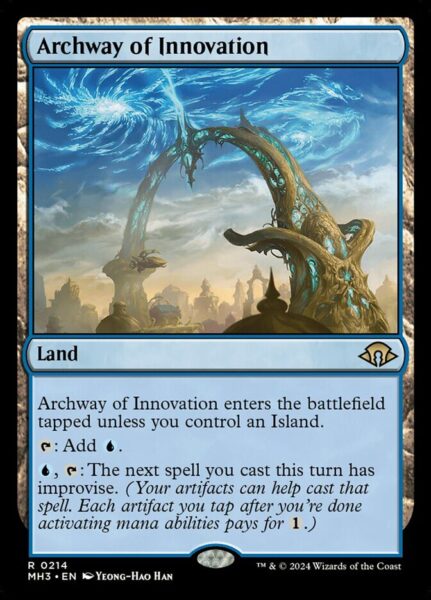
Synergistic Lands
There are no shortage of utility lands to choose from for a deck like this. Here are the ones that have a high synergy with our gameplan and card choices.
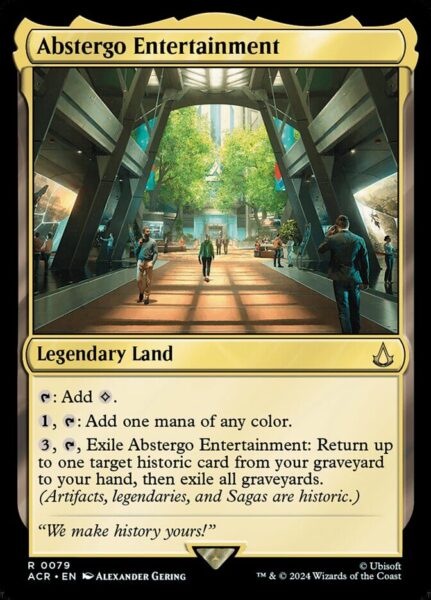
Abstergo Entertainment – a bit of color fixing alongside graveyard hate alongside returning our best dead artifact to our hand. Yeah, that’s a land printed in the 2020s.
Academy Ruins – a staple in any Blue artifact deck.
Archway of Innovation – ditto.
Inventors’ Fair – uh, ditto that ditto…

Riptide Laboratory – great with Snapcaster Mage…oh wait, we’re not playing that card. That’s right, Tamiyo is a Wizard! Jokes aside, we can attack with Tamiyo, get the Clue, then return her to our hand before she dies in combat. Or, we can bounce her in response to targeted removal or a sweeper.
Rivendell – this legendary land should always come in untapped.
The Shire – a great why to insulate our life total and to trigger Academy Manufactor. Oh, and it should also always enter untapped for us.
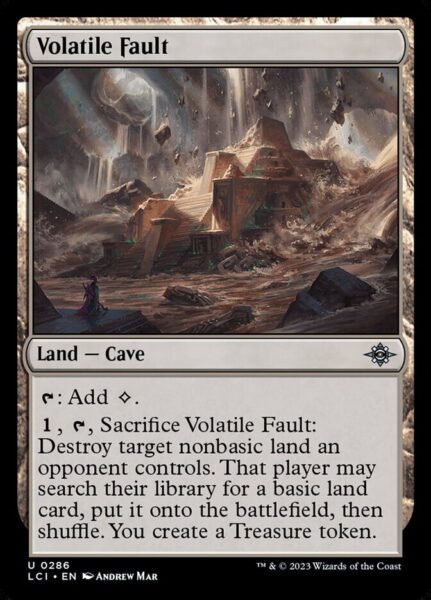
Volatile Fault – sure, there are better land destruction lands out there, but do they have the cute synergies with our deck that this Treasure producing Cave does? Didn’t think so!
The Rest
Here is where I made the most changes to my original build as detailed above. Here, too, is where the most flex spots can be found. After durdling and dying a few times, I decreased the number of Clue producers and unimpactful cards and increased the number of answers. These answers come in the form of kill spells, counter spells, and Cyclonic Rift. I’m not going to talk about each card in detail here; do I need to explain why Force of Will is good in this deck? Instead, I’ll just highlight a few of the more synergistic cards.
Chart a Course – a sweet 2-mana draw 2 spell, especially on turn 2, thanks to our commander.
Flare of Denial – probably needs no explanation, but I’ll just say that since our commander only costs , we will almost always be ahead on mana when sacrificing Tamiyo to counter a spell. It is a particularly good way to lure your opponent into thinking they can resolve their more expensive commander.
Lat-Nam’s Legacy – click here to see why this old card is still good, but for us, we will oftentimes want to shuffle one of our high-costing artifacts into our deck to be tutored up and cheated into play later.
Mox Amber – having this in our opening hand means we start the game ahead on mana.
Flex Spots
Other than tweaking the kinds of answers I’ve chosen, I can see cutting the Ensoul Artifact type of cards. I would never cut Rise and Shine or Tangletrove Kelp, but the enchantments that only turn a single artifact into a creature can be pretty underwhelming in a game of Commander. There is room to increase the power level by removing these in favor of some bigger bombs, more card draw, or more answers.
I’ve already mentioned Darksteel Colossus as a possible flex spot. There are other, more powerful artifact creatures that could replace this 11/11 pretty easily. Torrential Gearhulk is a powerful card, but maybe it doesn’t do enough to close out games?
Finally, Trading Post is a fun and flexible card, but there are other artifacts that could be swapped in that would increase our power level. Looking at you, The One Ring.
Another Direction
You may be wondering why I’m not including Urza’s Saga or cheap cantrips in the deck. Regarding the MH2 enchantment land, the answer is 2-part. First, I don’t have any more copies, as they are all in decks. Second, since I’m playing the card in so many decks, I wanted to build something different here. Would the card make the deck more powerful? Definitely. Including it in our 99 would also naturally lead us to include a few more 1-mana utility artifacts. I’ve gone down this road before, specifically in my Mono Blue Control deck, so I’m happy to eschew it here.
Another card type you may have noticed is missing is the cheap spells that draw us enough cards to flip Tamiyo, Inquisitive Student into her Planeswalker self. I’ve purposefully left many of these staples out because we are not overly interested in flipping her. Our plan is to make an army of Clues and attack, so we want her to stay a creature for as long as possible.
Ideal Hand and Game Play
For starters, we will mulligan nearly every hand that doesn’t have an untapped source in it. Alas, this has happened more often than one would think possible in a 2-colored deck with 8 Islands and numerous other untapped lands. Ideally, we’ll have at least three lands. Despite our low-costing commander, we’re still a mana hungry deck, as we want to be able to advance our board and hold up answers as soon as possible.
Next, we want something to do in the early game, ideally support pieces that will help generate more Clues from Tamiyo. Tireless Tracker, Academy Manufactor, or Erdwal Illuminator are all great to have early. Deduce and Chart a Course are always welcome sights in our opening seven.
Finally, for our last few cards, we’re happy to have answers or something to play towards that costs four or five mana. Counterspell or Flare of Denial plus Karn, Scion of Urza or Thopter Spy Network are examples of cards we’re usually happy to have early, as they bridge the game nicely for us.
From there, we want to start attacking with Tamiyo, Inquisitive Student, amassing Clues, and making land drops. We don’t want to draw cards with our Clues unless we’re in a desperate situation, either to make land drops or in search of an answer to a much-needed threat.
Weaknesses
Being a Simic Control deck means we have limited hard answers to resolved permanents. If we get behind on board or our interaction doesn’t line up with our opponent’s threats or when they deploy them, then we can die before we assemble all the pieces of our strategy. Similarly, since we need both ways to generate Clues and ways to make them into lethal threats, there will be games when one part of this strategy is missing. To ameliorate this, I’ve added the bombs I discuss above, but they bring their own danger. Drawing 9- and 11-drops early in the game instead of lands or set-up, usually results in death.

Conclusion
I have many fond memories of playing various versions of Tamiyo in Standard and Commander. I think this is one reason I enjoy this deck so much. I just really like Tamiyo. But there is another reason I love this deck so much that I quickly upgraded its power level and reduced its meme quality. It plays very similarly to the Aristocrat strategy that I love so much. That is, we need a critical mass of support pieces that all do something different but synergize with one another. Sure, any one of most of our cards are underwhelming, but when you take them as a whole, they are powerful, beautiful, and, most importantly, fun!
So what do you think? Do you have a Tamiyo, Inquisitive Student deck? How is it different than mine? What would you suggest as changes here? Is playing a cheap commander like this one obnoxious or perfectly fine? Let me know in the comments and, as always, thanks for reading and watching!



